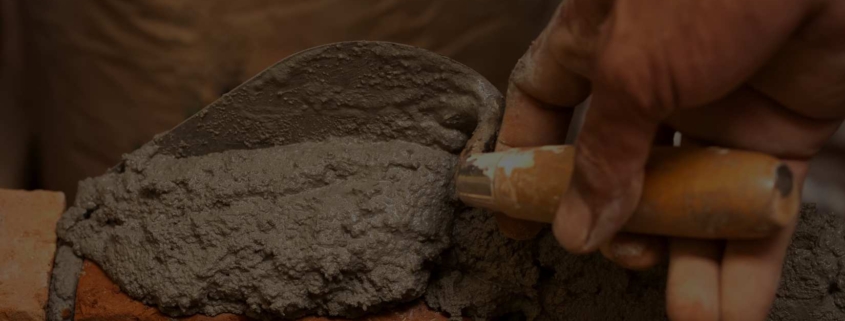Masonry is an art steeped in history, filled with untold tales of how brick and stone constructions have shaped our cities and homes over centuries. For those fortunate enough to call a brick house their home, or those considering incorporating brickwork into their property, understanding the craft behind your walls can deepen your appreciation for this timeless material. As Toronto’s trusted masonry company, Red Robin Masonry offers an unparalleled commitment to quality craft in the world of brickwork, combining authentic examples of masonry variants with world-class construction.
Brick masonry, while being one of the oldest known building techniques, remains widely adopted house construction material due to its durability, versatility, and aesthetic appeal. When built to professional standards, brick buildings embody an incredible blend of elegance, functionality, resilience, and sustainability, elements every Toronto homeowner appreciates.
In this blog, we will delve into the fascinating world of brick masonry: its nuances, benefits, various techniques, and measures to sustain its glory over time. We’re also detailing how Red Robin Masonry, known for its dedication to the craft, brings a unique blend of ancient skills and modern technical knowledge to create enduring, beautiful brickwork that adds strength and charm to any Toronto home. Whether you’re planning to construct a new house, thinking about a remodel, or curious about the brick walls around you, this all-in-one guide is for you.
Overview of Brick Masonry
Brick masonry is the process of constructing structures with individual bricks bonded together by mortar. These structures can range from residential homes to commercial buildings and public spaces. Developed centuries ago, brick masonry is still a popular choice in modern construction, thanks to its versatility, strength, and visual appeal. Today’s brick masons use a blend of traditional construction techniques and modern expertise to create structures that stand strong against different weather conditions and architectural stresses.
The Benefits of Using Brick as a Building Material
Bricks are an appealing building material, providing numerous benefits that make them an excellent choice for homeowners in Toronto. Here are some of the many advantages of brick masonry:
- Durability: Bricks are known for their exceptional durability, able to withstand harsh weather conditions and resist natural deterioration over time. Their strength ensures your building remains stable and maintains its structural integrity.
- Low maintenance: Brick masonry requires minimal maintenance compared to other building materials. The natural colour and texture of bricks make them resistant to staining and discolouration, while the presence of mortar joints helps prevent the buildup of dirt and grime.
- Energy efficiency: Bricks have excellent thermal mass properties, allowing them to retain heat during colder months and protect your home from overheating in the summer. This natural insulation can contribute to lower energy bills and a more comfortable living environment.
- Fire resistance: Bricks are non-combustible, providing excellent fire resistance. A properly constructed brick building can slow down the spread of a fire, reducing property damage and providing crucial extra time for occupants to escape safely.
- Aesthetics: Brick masonry adds a timeless, classic appeal to any home, with its natural colours and textures blending seamlessly with various architectural styles. By customizing the type of brick, pattern, and mortar colour, you can create a unique look that complements your home’s design.
Brick Masonry Techniques: From Basic to Advanced
Brick masonry is a skilled craft that uses various techniques to achieve different aesthetic and structural goals. Here are some commonly used brick masonry techniques:
- Running Bond: The most common brick pattern used in residential construction, consisting of bricks laid end-to-end in a single row with mortar joints aligned. This pattern is structurally strong and visually appealing, making it suitable for both exterior and interior walls.
- Stretcher Bond: Similar to the running bond, but with a half-brick offset in each succeeding row, creating a “stair-step” pattern. This technique adds visual interest and is commonly utilized in decorative elements like garden walls and chimney stacks.
- Flemish Bond: A more intricate pattern consisting of alternating “headers” (bricks placed with their short ends facing out) and “stretchers” (bricks placed with their long sides facing out) in each row. This technique creates a visually appealing, symmetrical pattern commonly used in historical structures.
- English Bond: Another attractive pattern, featuring rows of alternating headers and stretchers, with each row of headers placed directly above a row of stretchers. The result is a strong, visually striking brickwork pattern, ideal for both structural and decorative purposes.
How to Maintain and Preserve Brick Masonry
While brick masonry is a low-maintenance building material, there are essential steps homeowners can take to preserve and maintain their brickwork:
- Regular cleaning: Periodically clean your bricks using a soft brush and mild detergent, taking care to remove any dirt, grime, or moss that may have built up over time.
- Prompt repair: Address any cracks, loose bricks, or deteriorated mortar joints as soon as you notice them, preventing further damage to your masonry work.
- Waterproof sealing: Consider applying a waterproof sealant to your brickwork, which can help protect it from water damage and prolong its lifespan.
- Hire professionals: For any masonry repair or construction work, it’s essential to work with a trusted masonry company like Red Robin Masonry to ensure a high-quality outcome and avoid potential issues that may arise from DIY projects or inexperienced contractors.
Conclusion
Brick masonry is a time-honoured craft with a long and storied history. With its numerous benefits, including durability, energy efficiency, and aesthetic versatility, brick remains an ideal choice for homeowners in Toronto. By understanding the techniques and nuances of brick masonry and working with an experienced company like Red Robin Masonry, you can create a stunning, long-lasting home that combines the best of both history and modern innovation.
Whether you need brick repair or construction, rely on Red Robin Masonry’s commitment to craftsmanship, expertise, and quality service to create a beautiful, well-built brick structure that will stand the test of time. Get in touch with Red Robin Masonry, a top masonry company in Toronto, today to begin your journey toward your dream brick home.




